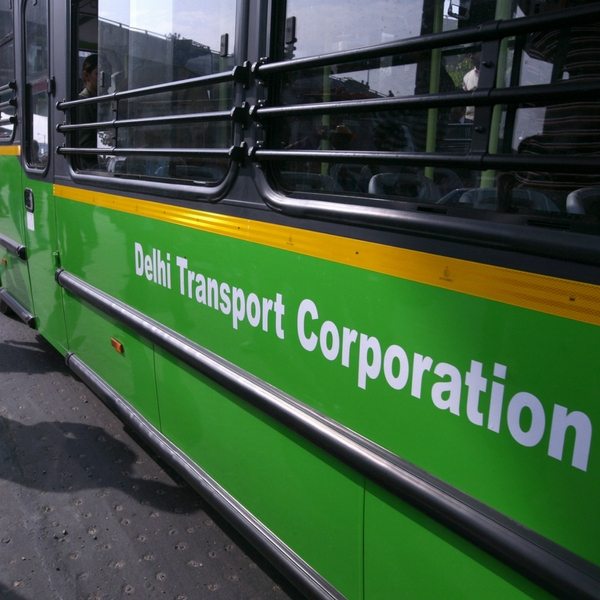“Where is the space to keep more DTC buses at the depots? Even the existing ones are hardly accommodated at the bus terminals”, says Amit Yadav, a DTC bus driver. Being one of the main public transport operators of Delhi, the DTC (Delhi Transport Corporation) has more than 6450 buses in its fleet to carry millions of passengers daily in the capital city.
But still, a commoner faces a lot of problems if they choose to travel in a DTC bus. According to the preliminary findings of a study commissioned by the Urban Development Ministry at the Centre in 2012, the availability of public transport in Delhi per 1000 people is just 0.504. The report also revealed that the average waiting time on all 517 DTC bus routes is 70 minutes due to less frequent bus trips in less populated areas that are under developed. These preliminary findings were revealed in a joint study conducted by the Institute of Urban Transport and the Urban Mass Transit Company Limited.
The problem of unavailability of DTC buses increases manifolds during the afternoon especially between 1 pm to 3 pm. “Our duty shift changes between 12 in the noon and 4 in the evening, once the morning shift ends”, says Baljeet, a DTC conductor. He adds saying that DTC drivers and conductors have their lunch between these shifts as there is no specific lunch time provided in their schedule.
“But due to traffic the shift rarely ends in the given eight hours and the buses always run late from their due time by an hour on an average”, adds Baljeet. “My classes in the college end at 1.30 and then I have to wait for a minimum of half an hour to catch a bus from Sarojini Nagar for going to the metro station”, says Akshay, a student of Delhi University.
DTC bus services work in two shifts of 8 hours each, while the total working hours is 20 (from 4 in the morning to midnight). Here is where the crux of the whole problem lies – only 16 hours of bus service is being provided instead of 20 hours. When asked why DTC doesn’t start a third shift to solve the problem, a DTC employee of the Sarojini Nagar Bus Depot replied, “This is impossible, where would those extra buses be parked once their trip ends?” Referring to the Bus Depot, he added: “The depot hardly has the capacity to hold 100 buses at a time, we know how difficult it is for us to park the buses here, as the depot becomes too congested with all the buses being parked one after the other.”
The second problem which came to light was the dearth of staff. “Due to the scarcity of DTC bus drivers; many buses don’t come out on the roads in the evening shift”, says a DTC driver who has been working on a contract basis for the past three years. The scarcity of buses in the evening shift makes life difficult for the passengers as they have to take an auto or private mini buses to reach their homes.
The report by Urban Development Ministry in 2008 states that due to unsatisfactory services provided by public transport in all the cities across India, people are opting to buy a private vehicle thereby increasing the congestion on roads leading to an increase in the traffic jams.
DTC is hiring bus drivers on a contract basis. “Nearly 70-80% of the bus drivers are employed on contract basis, I don’t feel passionate about my work as I am paid less as I work on a contract basis”, says Anil Rana, a DTC bus driver.
As the population of the capital has reached 1.67 crore, a drastic increase in the number of DTC buses is required to cater to the needs of the masses. DTC staff members at the Rohini Bus Depot 4 unanimously said that today DTC has nearly 6700 buses but the requirement is of 25,000 buses to accommodate the ever-increasing number of passengers.
Today DTC has about 50 bus depots across Delhi to park more than 6000 buses. Two basic problems that have been highlighted are a lack of staff and, of bus depots. Due to lack of staff (drivers), many AC buses of DTC can be seen standing in the depots for months. To decrease the burden of accommodating more than 100 buses in one bus depot, there is a dire need to construct new depots and bus terminals across the capital.
In a low-floor DTC bus which has a capacity of 36 seats generally, carries more than 80 passengers on an average. Another problem which has caught a lot of attention is that some areas are facing acute shortage of buses in spite of the huge public demand. “I have to wait for long to catch a bus, although buses have an average frequency, most of the them which come are jam packed, with no scope to even breathe”, says Anurag Tiwari, a daily commuter from the Samaypur Badli area. Another major complaint by passengers is that most of the times buses of the same route come one after the other in large numbers at the same time and after that, they have to wait for long to board the next bus.
With an ever increasing population of the national capital, the demand for more DTC buses will continue to increase. According to a 2014 report released by the UN, the population of Delhi will very quickly touch the 36 million mark. To cater to the transport needs of such a huge population, a much-needed increase in DTC buses is required. Though, the new Delhi Transit cluster buses are trying to ease the burden on DTC buses but still the numbers are too small to be satisfied.
_
